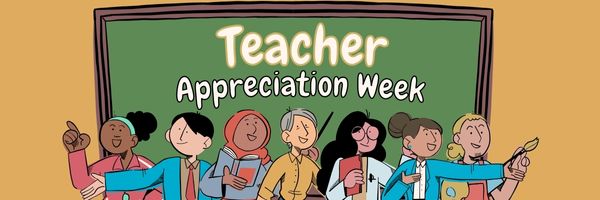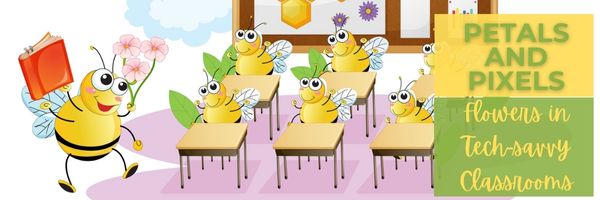Year: 2025
Happy Mother’s Day!
Mother’s Day in the United States is annually held on the second Sunday of May. This year, that’s May 11th. It celebrates motherhood and it is a time to appreciate mothers and mother figures. Many people give gifts, cards, flowers, candy, a meal in a restaurant or other treats to their mother and mother figures, including grandmothers, great-grandmothers, stepmothers, and foster mothers (click for updates to the list):.
- Mother’s Day activities
- Mother’s Day Activities from
- Mother’s Day cards
- Mother in different languages
- Mother’s Day Quotes
- Mother’s Day Sayings
- Mother’s Day Templates from Canva
Anyone have some favorite websites to share? My list isn’t terribly robust.
Enjoy your day with your children! (more…)
Share this:
- Click to share on Facebook (Opens in new window) Facebook
- Click to share on X (Opens in new window) X
- Click to share on LinkedIn (Opens in new window) LinkedIn
- Click to share on Pinterest (Opens in new window) Pinterest
- Click to share on Telegram (Opens in new window) Telegram
- Click to email a link to a friend (Opens in new window) Email
- More
Subscriber Special: 10% Discount with Newsletter Sign-up
Every month, subscribers to our newsletter get a free/discounted resource to help their tech teaching.
Sign up for our newsletter. Get 10% off your next purchase!
Share this:
- Click to share on Facebook (Opens in new window) Facebook
- Click to share on X (Opens in new window) X
- Click to share on LinkedIn (Opens in new window) LinkedIn
- Click to share on Pinterest (Opens in new window) Pinterest
- Click to share on Telegram (Opens in new window) Telegram
- Click to email a link to a friend (Opens in new window) Email
- More
20+ Online Resources for Screenshots, Screencasts, Screenshares
Here are a bunch of online resources for Screenshots, Screencasts, Screenshares, Videocasts, and a Lesson Plan click here for updates to the list):
Screencasts
- Chromebook native tool--video on how to use
- Educreations–whiteboard and screencasts
- Hippo–extension for Chrome; screencast, voice, webcam recorder
- Icecream Apps–screencasts and screenshots
- Loom–Chrome extension; record your desktop, an individual tab, and or your webcam
- My Screen Recorder–screencasts everything; downloaded software; fee
- QuickTime–can record a movie from your camera, or record the screen of your iPhone, iPad, or iPod touch. It can also record audio from a microphone or record the screen of your Mac.
- RecordCast–free, online, no dowload, screencast or screenshot; download file afterward
- Screencastify–Chrome web extension; for Chromebooks and more
- ScreenPal — for desktops, online, Chromebooks, and iOS
- Snagit
- VidYard Go Video–Screen, voice and webcam recorder; great for Chromebooks
Screen Share
Screenshots
- Grab–included in OS X as a screenshot utility
- iPad: hold Home button and power button at same time
- Mac: Command Shift 3 for a full screenshot; Command Shift 4 for a partial screenshot
- Nimbus–a browser app that takes screenshots with robust editing tools (free)
- RecordCast–free, online, no dowload, screencast or screenshot; download file afterward
- Snagit–as a download (for a fee) or a free iOS and Chrome app
- Surface tablet: hold down volume and Windows button
- Windows Snipping Tool–included in Windows
VideoCast
Share this:
- Click to share on Facebook (Opens in new window) Facebook
- Click to share on X (Opens in new window) X
- Click to share on LinkedIn (Opens in new window) LinkedIn
- Click to share on Pinterest (Opens in new window) Pinterest
- Click to share on Telegram (Opens in new window) Telegram
- Click to email a link to a friend (Opens in new window) Email
- More
Tech Teacher Appreciation Week
Tech Teacher Appreciation Week
If you wonder what’s so hard about being a teacher, look at this list of challenges they faced the last few years: (more…)
Share this:
- Click to share on Facebook (Opens in new window) Facebook
- Click to share on X (Opens in new window) X
- Click to share on LinkedIn (Opens in new window) LinkedIn
- Click to share on Pinterest (Opens in new window) Pinterest
- Click to share on Telegram (Opens in new window) Telegram
- Click to email a link to a friend (Opens in new window) Email
- More
May is Homeschooling Awareness Month
Homeschooling Awareness Month is celebrated annually in May to promote the benefits of homeschooling and educate the public about this viable educational option. It has been recognized since around 2010, gaining traction in the 1970s. The initiative highlights how homeschooling allows for personalized education, flexibility, and parental involvement in a child’s learning, often leading to well-rounded development. Key points include:
- Purpose: to dispel myths (i.e., homeschoolers lack socialization or academic rigor) and showcase advantages like customized curricula, flexible schedules, and the ability to teach life skills (i.e., budgeting, cooking). It also connects homeschooling families and raises awareness about available resources.
- Activities: Families and organizations are encouraged to share their homeschooling experiences on social media using hashtags like #HomeschoolAwarenessMonth. Many groups offer free resources like webinars, curriculum discounts, or local meetups.
- Benefits: Homeschooling promotes learning in diverse settings (libraries, museums, parks), fosters hands-on experiences, and avoids the one-size-fits-all approach of traditional schools. It’s also noted for safety, especially in addressing concerns like bullying.
Why is homeschooling important (more…)
Share this:
- Click to share on Facebook (Opens in new window) Facebook
- Click to share on X (Opens in new window) X
- Click to share on LinkedIn (Opens in new window) LinkedIn
- Click to share on Pinterest (Opens in new window) Pinterest
- Click to share on Telegram (Opens in new window) Telegram
- Click to email a link to a friend (Opens in new window) Email
- More
Flowers in the Classroom: Blossoming Learning with Tech
Flowers spark creativity and learning in classrooms. Today, the Ask a Tech Teacher international team is exploring how flowers inspire students in STEM, art, and ecology, how a bouquet can enhance tech-driven education and classroom joy. Learn how they blend with tech tools and can brighten educational spaces.
Petals and Pixels: Flowers in Tech-Savvy Classrooms
Imagine a classroom where sunflowers nod on a windowsill during a coding lesson, or a science lab where students dissect daisies while a tablet app tracks their findings. Flowers bring a vibrant energy to education, bridging nature and technology in ways that captivate young minds. They inspire projects, from digital art to ecological studies, and foster a welcoming space for learning. They connect abstract concepts to tangible beauty, making lessons stick. To weave that magic into any classroom, anyone can order a bouquet of flowers and have it delivered, ideal for sparking inspiration or gifting to a teacher.
Flowers fit seamlessly into tech-driven education. They fuel curiosity in STEM experiments, add depth to creative assignments, and soften the hum of devices with natural charm. They’re tools for engagement, helping students explore science, art, and community through hands-on and digital means, all while keeping the classroom lively. (more…)
Share this:
- Click to share on Facebook (Opens in new window) Facebook
- Click to share on X (Opens in new window) X
- Click to share on LinkedIn (Opens in new window) LinkedIn
- Click to share on Pinterest (Opens in new window) Pinterest
- Click to share on Telegram (Opens in new window) Telegram
- Click to email a link to a friend (Opens in new window) Email
- More
What You Might Have Missed in April–What’s up in May
Here are the most-read posts for the past month:
- National Library Week–Resources, Links, Ideas
- 17 K-8 Digital Citizenship Topics
- April is Financial Literacy Month
- 15 Best Technology Careers for the Future in 2025
- Basics in Every Lesson Plan
- Join me to launch my Indie Book
- Easter Classroom Resources
- Great App to Teach Spelling
- Summer STEM at USNA
- Earth Day Class Activities
Here’s a preview of what’s coming up: (more…)
Share this:
- Click to share on Facebook (Opens in new window) Facebook
- Click to share on X (Opens in new window) X
- Click to share on LinkedIn (Opens in new window) LinkedIn
- Click to share on Pinterest (Opens in new window) Pinterest
- Click to share on Telegram (Opens in new window) Telegram
- Click to email a link to a friend (Opens in new window) Email
- More
Is the Traditional Classroom Becoming Obsolete?
Something broke in American education these past years. Too many students don’t reach grade-level metrics and no one can agree on the cause. I went out to our international contributors for ideas. They had a lot, but this one I thought I’d cover first:
Is the Traditional Classroom Becoming Obsolete?
You might argue that the traditional classroom still plays an essential role in education, but the rapid growth of online and hybrid models suggests otherwise. As students increasingly seek flexible and interactive learning experiences, the conventional approach may not meet their needs any longer. This shift raises critical questions about the future of education: How will teachers adapt their roles? What innovations might redefine the learning environment? Understanding these dynamics could reshape your perspective on what effective education looks like today.
The Rise of Online Learning
Online learning has increasingly become a staple in education, with studies showing that over 30% of students now prefer it over traditional classroom settings. This shift raises questions about the efficacy and long-term viability of conventional education methods. You might wonder why this preference exists. Data indicates that online learning offers flexibility that traditional classrooms often can’t match.
Students can learn at their own pace, tailoring the experience to their unique needs, which can enhance engagement and retention.
However, you should also consider the challenges that accompany this rise. Not all online platforms deliver quality education, and the lack of face-to-face interaction can hinder social development and collaborative skills. Reports highlight that many students struggle with self-discipline in an online environment, leading to higher dropout rates compared to traditional settings.
Moreover, issues like digital divide—where not all students have equal access to technology—raise concerns about equity in education.
Ultimately, while online learning’s popularity is undeniable, it’s essential to analyze its limitations and implications critically. As you explore this educational landscape, understanding both the advantages and drawbacks will be vital in determining the future of learning. (more…)
Share this:
- Click to share on Facebook (Opens in new window) Facebook
- Click to share on X (Opens in new window) X
- Click to share on LinkedIn (Opens in new window) LinkedIn
- Click to share on Pinterest (Opens in new window) Pinterest
- Click to share on Telegram (Opens in new window) Telegram
- Click to email a link to a friend (Opens in new window) Email
- More
Navigating How and When to Use Tech When Teaching Young Children
New America has a good overview on raising kids with tech:
Navigating How and When to Use Tech When Teaching Young Children
Take-Aways from Our Two-Part Series Focused On Tablets in Pre-K Through Third Grade
Early childhood educators make thousands of decisions each day. Among them are decisions around technology use with their young learners, which are too often shaped by policies and pedagogies that lag behind the latest research and the abundance of available options.
Share this:
- Click to share on Facebook (Opens in new window) Facebook
- Click to share on X (Opens in new window) X
- Click to share on LinkedIn (Opens in new window) LinkedIn
- Click to share on Pinterest (Opens in new window) Pinterest
- Click to share on Telegram (Opens in new window) Telegram
- Click to email a link to a friend (Opens in new window) Email
- More
Applying for a Military Academy
Military academies offer benefits most high school students and their parents don’t realize:
- the quality of education is comparable to an Ivy League
- they not only provide you with an education, but provide a job when you finish–no job hunting, no rejections,
- they pay you to go to school–that’s right, each of the four years, you are paid more to attend classes and complete the other activities required to graduate
- they are free–no charge for classes, books, room and board; they even pay for your summer school
But they are picky. Applying pits you against a huge pool of highly-qualified applicants. It’s not just about who has the best GPA and SAT scores. Admissions weighs:
- scholastics
- physical
- moral
- personal drive
To gain acceptance requires something different than the usual preparation. Here’s one book to prepare you:
Building a Midshipman
by Jacqui Murray
Available: Amazon
You don’t have to be a miracle-worker to the 10% of applicants accepted to a military academy, but you do need a plan. For the thousands of students who apply every year–and slog through the numbing concatenation of decisions preceding a nomination–there is no greater discouragement than the likely event that they will fail. This, though, is the Board’s peek into an applicant’s moral fiber and an important ingredient to the go/no go decision.
In the words of James Stockdale, USNA ’46 and Medal of Honor Winner: “The test of character is not ‘hanging in there’ when you expect a light at the end of the tunnel, but performance of duty and persistence of example when you know that no light is coming.”
This is the true story of Maggie Schmidt, an All-American kid who dreamt of attending the Naval Academy when her research into the typical Midshipman uncovered a profile alarmingly like herself. This book describes her background and academic interests, her focus, as well as her struggle to put together a winning admissions package. Along the way, you gain insight into the moral fiber that grounds everything she does and the decisions she must make that some consider impossible for an adolescent, but are achievable for thousands of like-minded teens. This workbook walks you through the long process, provides check lists of everything required, decision making matrices, goal-setting exercises to determine if USNA is a good fit for you, and a mix of motivation and academic advice to balance a decision that rightfully might be the biggest one most teens have ever made.
Share this:
- Click to share on Facebook (Opens in new window) Facebook
- Click to share on X (Opens in new window) X
- Click to share on LinkedIn (Opens in new window) LinkedIn
- Click to share on Pinterest (Opens in new window) Pinterest
- Click to share on Telegram (Opens in new window) Telegram
- Click to email a link to a friend (Opens in new window) Email
- More
























































